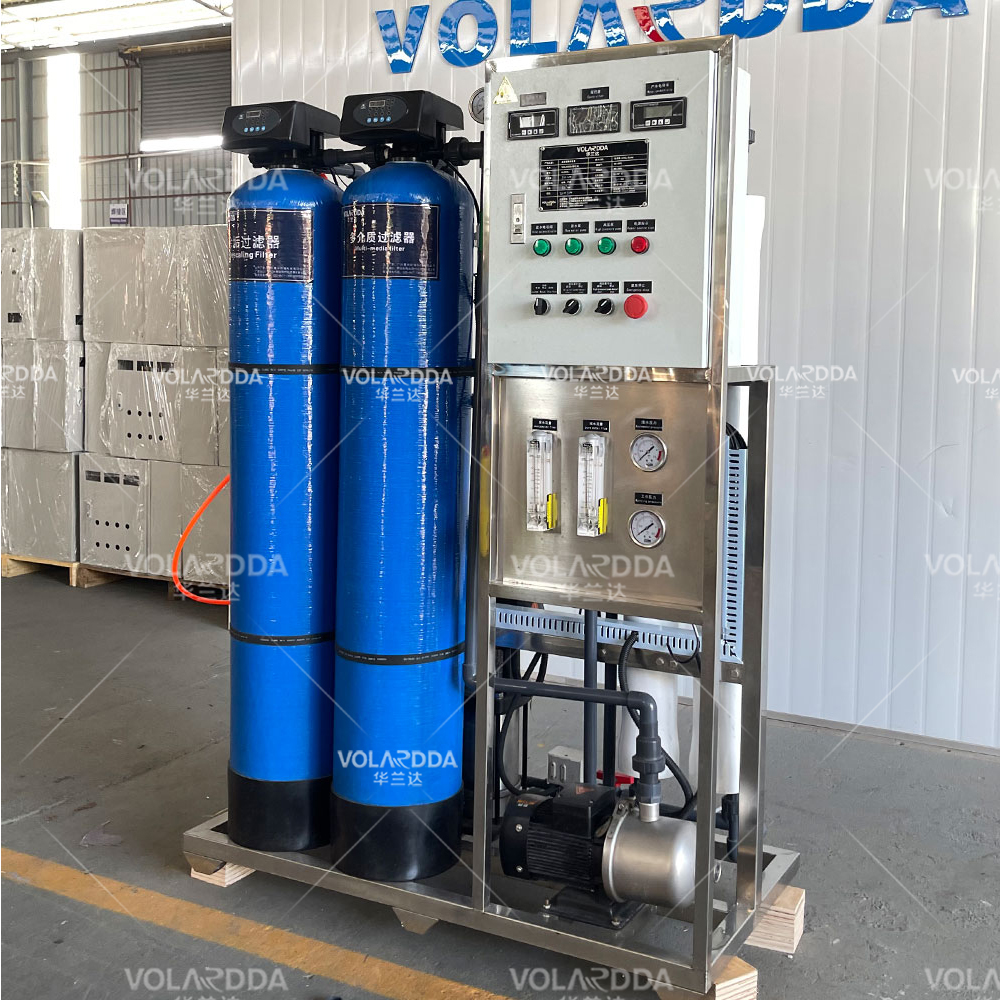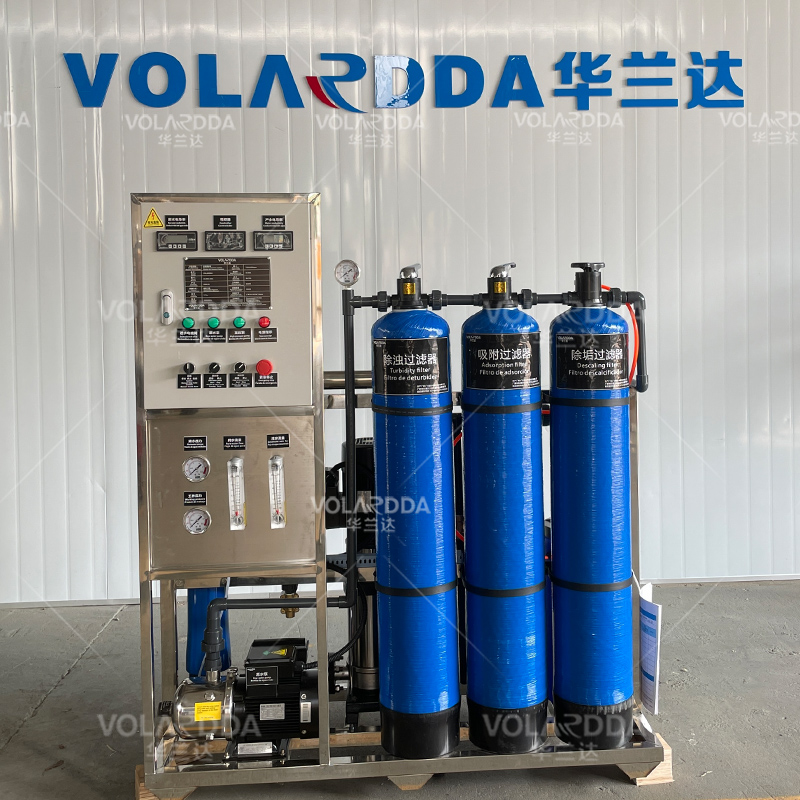Common fault analysis of reverse osmosis
Before using reverse osmosis equipment, you should pay attention to check whether the appearance of the machine is normal, confirm that the water source and power supply can be switched on after the normal, if the equipment fails, try to find out the essence of the problem from these fault phenomena, so as to implement maintenance and maintenance countermeasures as soon as possible.

The failure of RO membrane reverse osmosis system usually has at least the following conditions:
First, when the working pressure and electrical conductivity are normal, the water production decreases;
Second, the desalting rate decreases after standardization, and the conductivity of the produced water increases in the reverse osmosis system.
Third, after standardization, the water production decreases, and it is usually necessary to increase the operating pressure to maintain the rated water production, that is, the working pressure rises;
1
Water yield decreased after standardization
The reduction in water production after standardization of the RO system can be found according to the following three circumstances:
(1) If the water yield of the first stage of the RO system decreases, there is the deposition of particulate pollutants;
(2) The water yield of the last section of the RO system is reduced, there is scale pollution;
(3) The water production of all sections of the RO system is reduced, then there is pollution blockage;
2
Decreased water production after standardization is one of the most common system failures, which can be caused by:
(1) The reduction of membrane components is to operate in accordance with the number of designed membrane components;
(2) The low pressure operation of the reverse osmosis membrane is to operate below the designed reference pressure (there may be a throttle valve);
(3) It is found that the compaction of the membrane component occurs when the reverse osmosis membrane operates under conditions that greatly exceed the reference pressure, and the membrane component must be replaced;
(4) The reduction of operating temperature, according to the design temperature of 25 degrees operation;
(5) Operation at a higher recovery rate, which will increase the TDS of the average inlet water, thus increasing the osmotic pressure. When operating at a recovery rate of more than 75%, the amount of concentrated water is reduced, so that the concentration rate of water in the membrane module increases, resulting in a serious decline in the quality of the feed water, due to the rise of the osmotic pressure of the feed water, resulting in a decrease in the amount of permeable water, in serious cases, the membrane surface precipitated salt scale, must be produced according to the design recovery rate of water;
(6) Membrane contamination. Metal oxides or filth attached to the membrane surface cause blockage of the reverse osmosis membrane (most importantly).
(7) The pressure difference of reverse osmosis in operation rises, the operation management of pretreatment is improved, the water quality of reverse osmosis is improved, and the reverse osmosis components are cleaned with drugs;
(8) The mixture of oil, pay attention to the oil must not enter the water supply, oil will pollute the reverse osmosis membrane;
(9) Ensure that the filter element in the filter is replaced regularly, and if it is not replaced for a long time, it will lead to the blockage of the filter element, thus affecting the water intake of reverse osmosis;
(10) An increase in the inlet water conductivity, which increases the osmotic pressure that must be overcome when the produced water passes through the membrane.
3
Conductivity rise solution
(1) First of all, confirm whether the valve is opened correctly, and whether the ratio of pure water to concentrated water is correct;
(2) Whether the inlet water conductivity is increased, that is, whether the inlet water conductivity is increased than before (such as Humen salt tide, the conductivity rises to 1000μs\cm);
(3) Whether the reverse osmosis membrane is polluted by inorganic scaling CaSO4, MgSO4, BaSO4, organic pollution, metal oxide pollution, etc.;
(4) Whether the reverse osmosis membrane is in contact with strong oxidants (such as Cl2) and is degraded by strong oxidants. Any oxide contact will damage the membrane element;
(5) O-ring damage or leakage, O-ring leakage will cause the reverse osmosis water conductivity to rise quickly;
(6) The reverse osmosis membrane is in contact with strongly oxidizing substances such as Cl2, O3, etc., and is oxidized and degraded by strongly oxidizing substances.
4
Causes and solutions of water yield decline
(1) Whether the RO reverse osmosis membrane is contaminated or blocked;
(2) the inlet water conductivity increases;
(3) It is found that the compaction of the membrane component occurs when the reverse osmosis membrane operates under conditions that greatly exceed the reference pressure, and the membrane component must be replaced.
(4) Whether the working pressure reaches the rated working pressure of the reverse osmosis membrane. The rated working pressure is determined according to the type of reverse osmosis membrane, and the water production can be increased by appropriately increasing the inlet pressure.
(5) Raw water contains a certain concentration of suspended matter and dissolved matter.
The suspended substances are mainly inorganic salts, colloids and biological particles such as microorganisms and algae. Soluble substances are mainly soluble salts and insoluble salts, metal oxides, acid bases and so on. In the reverse osmosis process, the volume of incoming water is reduced, and the concentration of suspended particles and dissolved substances is increased. Suspended particles can deposit on the membrane, blocking the flow channel and increasing frictional resistance (pressure drop). When the insoluble salt exceeds its saturation limit, it will precipitate out of the concentrated water, forming scale on the membrane surface, reducing the flux of the RO membrane, increasing the operating pressure and pressure drop, and causing the quality of the product to decline.
(6) The influence of water temperature.
The rated water yield of the reverse osmosis membrane is designed based on 25 ° C, and the water yield decreases by 2-3% for every 1 ° C decrease in temperature.
All these factors make the water yield of reverse osmosis membrane gradually decrease, the salt permeability gradually increases, and the pure water quality decreases. Under normal circumstances, the service life of reverse osmosis membrane is 2 to 3 years. The reverse osmosis membrane should be replaced in time after damage, otherwise it will not only affect the water production, but also deteriorate the water quality.

